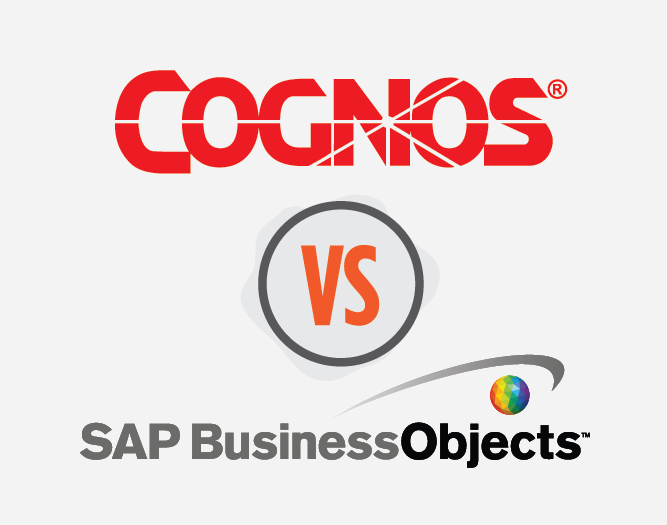
Arguably the two leading or most discussed business intelligence (BI) tools over the past decade are IBM Cognos and SAP Business Objects. When IT managers, consultants, or basic IT professionals look to decide which is best for their short or long-term needs, they don’t have to search long for an exhaustive list of metrics to choose from to conduct a thorough comparison. Cognos is basically divided into three segments, Analysis Studio, Query Studio, and Report Studio:
- Analysis Studio – Creates an analysis of large data sources. It provides a multidimensional analysis that allows for the identification of trends with a deeper understanding of the source data not found in standard reports.
- Query Studio – A customizable report layout service that allows for simple queries with a wide range of filtering and sorting capabilities.
- Report Studio – Used to create management reports in two different modes. Professional authoring provides the full range of advanced Cognos functionality while the Express mode uses a more simplified interface for non-technical users.
Business Objects’ Web Intelligence contains all three capabilities right out of the box. These services are where the main differences between Cognos and Business Objects lie.
Differences Between Cognos and Business Objects
Simplicity and Flexibility: Most users see Cognos as the more flexible tool especially when it comes to reporting. It provides a developer-based writing tool that provides more control over report formatting. Business Objects’ Web Intelligence is easier to learn and use initially, but provides limited functionality when compared to Report Studio. Cognos also provides more options when creating or joining queries, adjusting cardinality and aggregation methods, and creating predefined objects to use on reports. Business Objects, on the other hand, makes it easier to apply charting to some reports with a simple right-click, while Cognos may require the configuration of some options up front before performing the same function. Some users may see that level of flexibility as being too cumbersome to manage and may require the need for an in-house certified Cognos developer.
Querying Capability: When comparing the querying capability of both applications, the same simplicity versus flexibility debate continues but on opposite sides. Cognos’ Query Studio appears to be a simpler tool while Business Objects provides the advanced options that may require the skills of a more technically advanced user to build complex reports.
Reporting Capability: Another distinction worth consideration is how the reporting capability within each application is designed to process metadata models and database designs. Business Objects’ reporting capabilities appear to be limited by how well the metadata model or database from which it’s working with is designed. Cognos’ advanced options provide the flexibility for a developer to get the most reporting options from a restricted database model.
The bottom line is that both tools prove to be more than adequate for basic functionality and are actually more similar than different. Each has their own unique way of addressing specific areas within BI. The task of choosing between the two may be more of a question of which fits better into your metadata model. A developer may opt for a more flexible configuration that allows for customized features that would fit most metadata designs. A junior end-user may prefer a more intuitive toolset that shortens the learning curve. Determining the needs of the project, along with assessing the skillset required to operate the project, are also areas that require thorough analysis.